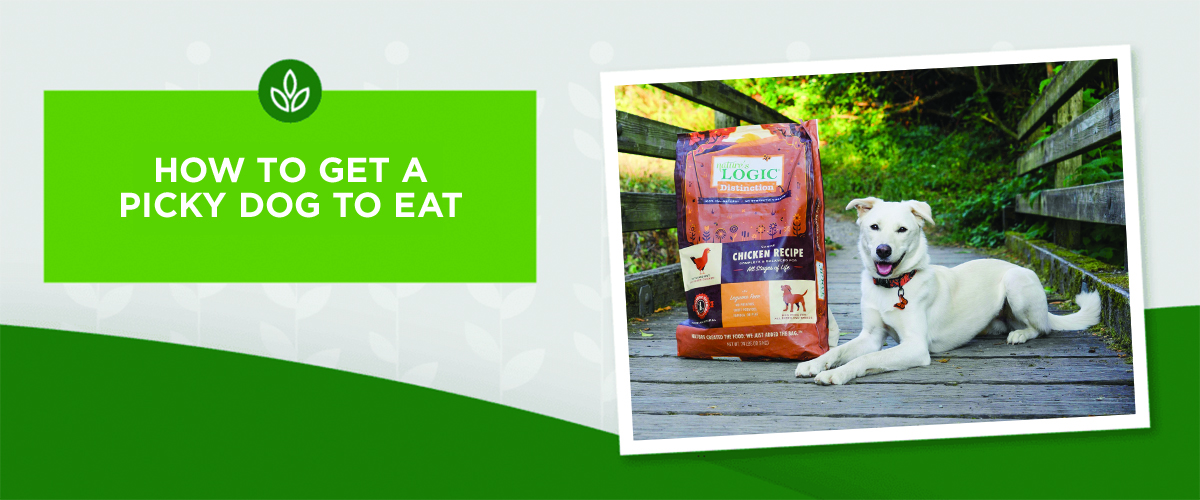What to Do If Your Dog is a Picky Eater
For many pet owners, having a picky eater can be a struggle. Having a dog who leaves their food untouched time after time can be a real head scratcher. While it might seem like they’re just being stubborn, a lack of interest in food could be a signal for a deeper issue.
Proper nutrition is the foundation of a healthy and happy pup. Together, we’ll explore ways to make mealtime more appealing and help encourage your canine companion’s appetite.
Understanding Your Dog’s Pickiness
Understanding your dog’s eating habits involves recognizing their preferences, which can be influenced by factors like taste and texture of the food, and individual health considerations for your specific pup. Knowing why your dog may be a picky eater can help you address their dietary preferences and ensure they maintain a healthy appetite.
- Food Preferences: Just like humans, dogs can have preferences when it comes to taste and texture. Some dogs may simply not enjoy the flavor or consistency of their food. Smaller breeds may not be as food-driven and might prioritize attention or praise over meals.
- Variety: Too much variety in their diet can lead to picky eating. Your pup may become accustomed to different flavors and textures, making them less interested in their regular food, this is especially true if you’re feeding your pup often from the table.
- Treats: While it’s fine to reward good behavior with treats, offering too many treats can spoil their appetite during mealtime. Be cautious not to send the message that they can hold out for something better. Treats should only make up about 10% of a dog’s daily nutritional intake.
- Age or Health: Older dogs or those with health issues might experience changes in appetite. If your dog’s lack of interest in food persists, consult your vet.
- Loss of Smell or Taste: As dogs age, their sense of smell and taste may decline. This can impact their enjoyment of food, leading to picky eating.
- Sensitive Stomachs and Allergies: Some dogs have sensitive stomachs or food allergies, which can affect their willingness to eat. Pay attention to any adverse reactions to specific ingredients.
Remember that individual dogs vary, so it’s essential to observe your pet’s behavior and consult with a veterinarian if you have concerns about their eating habits and to rule out any underlying health problems.
Making Mealtime More Appealing
Making mealtime more appealing for picky dogs can be a challenge, but there are several strategies that can help. By incorporating these techniques, you can help turn mealtime into an enjoyable and engaging experience for your dog, which may help your picky eater.
- Try different bowls or feeding locations: Changing the bowl or the location where your dog eats can create a novel and exciting environment, which may stimulate their interest in food.
- Add broth or warm water to dry food: Enhancing the aroma and texture of dry food with a bit of bone broth or warm water can make it more enticing. This also encourages proper hydration.
- Mix in small amounts of wet food: Adding wet food as a topper to dry kibble can introduce new flavors and textures, making the meal more appealing.
- Use food puzzles or interactive feeders: Turning mealtime into a fun and stimulating activity with food puzzles or interactive feeders can encourage your dog to engage more eagerly with their food.
Creating a Feeding Routine for Your Picky Eating Dog
Whether you have a pup that’s a picky eater or not, establishing a consistent feeding schedule is important. Here are some essential tips to help you create a feeding routine that encourages your furry friend to eat regularly:
- Set Regular Mealtimes: Dogs thrive on routine, and mealtime is no exception. Try to feed your dog at the same time(s) each day. Consistency helps regulate their appetite and ensures they know when to expect food.
- Avoid Sporadic Feeding: Resist the temptation to top off their food or provide extra meals outside of the designated feeding times. Sporadic feeding can confuse your dog and lead to picky eating habits or unwanted weight gain. Stick to the schedule you’ve established.
- Remove Uneaten Food after a Specific Time: If your dog doesn’t finish their meal within 15-30 minutes, remove the bowl. This teaches your dog that food is only available for a limited time and encourages them to eat when it’s offered. Plus, it prevents food from becoming stale or attracting pests. Removing food can also be good to keep the food from developing any bacteria or becoming too soggy if mixing wet and dry food, or adding water or bone broth to a kibble.
- Avoid Free-Feeding: Free-feeding or leaving food out all day might seem convenient, but it can contribute to picky eating. It can also lead to overeating or complete disinterest in meals when food is always available.
- Use a Programmable Food Dispenser: Consider investing in an automatic food dispenser. These devices allow you to preset mealtimes and portion sizes and can help keep kibble fresh. Your dog will learn to associate the dispenser with mealtime making feeding more predictable, especially if you’re unable to keep a consistent feeding routine because of work hours or other variables.
Switching up the Menu
If your pup isn’t as excited about their food as they used to be, switching up their food may help them. Look at the history of what they’ve been fed. If they’re used to a wet diet and you’ve introduced kibble too quickly, that could have an impact on their eating behavior. Also look at the inclusion level of proteins. If your pup is used to high protein diets, recipes with lower levels of protein could be less appealing. If you’re dealing with a picky eater, consult your vet and consider these strategies to entice your dog to enjoy their meals:
- Try Different Proteins: Dogs can get bored with food. As long as your dog doesn’t have allergies to proteins, try experimenting with different protein sources like chicken, beef, and fish or explore more novel proteins like venison, rabbit, or duck and salmon. Remember to introduce new foods gradually to avoid upsetting your dog’s stomach.
- Limit Table Scraps: While it’s tempting to share your dinner scraps with your pup, too many table scraps can lead to finicky eating habits. Dogs may hold out for the tastier human food instead of their regular recipe. Stick to dog friendly treats and avoid giving in to those pleading eyes during mealtime. If you do choose to offer table scraps, it’s best to place them into your dog’s bowl at their regular eating time.
- Avoid Getting Too Creative: Sometimes, in our quest to please our pets, we end up creating elaborate meals. However, dogs thrive on consistency. Stick to a high quality, all natural dog food that meets their nutritional needs. Stick to dog appropriate toppers and limit treats during mealtime. Avoid adding too many extras or constantly changing their diet. A stable routine may help picky eaters feel more secure.
- Use Both Wet and Dry Food: Some dogs prefer wet food, while others prefer crunching on kibble. Mixing both wet and dry food can add variety and appeal to your dog’s meals. Plus, it provides different textures and flavors to keep them engaged. Portion control is important when combining wet and dry food.
The best dog food for picky eaters is one that they enjoy eating! Take your time to find a recipe that suits your pup’s individual preferences. Remember, the key to successfully changing dog food is to transition slowly over 7-10 days and note how your dog responds. Always consult your vet if you have any questions or concerns.
Encouraging Exercise and Playtime
If your dog is a picky eater, incorporating regular exercise and playtime into their daily routine can make a significant difference. Physical activity can stimulate their appetite, making them more likely to eat their meals with enthusiasm. Take your dog for a brisk walk, play a game of fetch, or explore a new park together to naturally boost their hunger.
Not only does exercise improve their physical health, but it also enhances their mental wellbeing, potentially reducing anxiety that might contribute to their fussy eating habits. By making playtime a priority, you can set the stage for a happier, healthier, and more eager eater.
Seeking Professional Help
If your dog is a persistently picky eater, it’s crucial to consult with your veterinarian to rule out any underlying health issues. A vet can provide tailored advice for your pup’s needs and offer guidance on safe and effective ways to tempt your dog’s taste buds.
Typically, if you’re feeding your pup a complete and balanced diet, you don’t need food additives, however your vet may recommend appetite stimulants or specific supplements to ensure your dog receives essential nutrients. Adding toppers like bone broth, pumpkin, or a small amount of wet food can be a great way to make meals more enticing.
How to Get a Picky Dog to Eat
A picky eater doesn’t have to be a permanent problem. By making mealtime more appealing with enticing aromas and flavors, establishing a consistent feeding routine, and regularly switching up the menu with nutritious and varied options, you can help transform your dog’s eating habits. Encouraging regular exercise and playtime not only boosts their appetite but also enhances their overall well-being.
Stick to the routine, offer high quality dog food, and consult your veterinarian if your dog’s picky eating persists. If these strategies don’t seem to work, seeking professional help from a veterinarian or a pet nutritionist can provide tailored solutions to ensure your furry friend stays happy and healthy.





